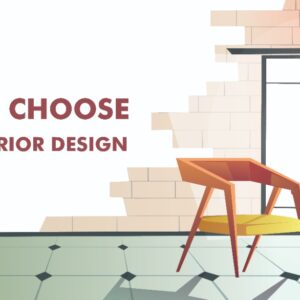
Login
X
- Home
- Courses
- Graduation
- Diploma Certificate
- Professional Diploma
- Special sessions / Aptitude boost up
- News & Events
- Student zone
- Placement
- Gallery
- FAQ
- Contact Us

BSc Interior Design is a highly regarded career pathway with diverse employment opportunities. Interior design is a rewarding career for those who enjoy transforming ordinary spaces into visually appealing spaces. BSc Interior Design is an excellent course for an individual who is creative and enjoys beautifying spaces. It is an effective way to demonstrate one’s talent and design skills while growing and meeting new people to broaden one’s horizons.

Interior design has recently emerged as an appealing career path, resulting in a plethora of employment options for young and skilled aspirants. With more citizens’ desire to invest in luxurious and relaxing homes, the interior design industry is becoming increasingly important in building projects. A degree in BSc interior design can provide aspiring designers with a plethora of job opportunities.

When confronted with complex projects requiring careful analysis, an interior designer’s creative thinking and practical expertise are tested. A designer can establish a relationship with his customers and provide results while meeting requirements. Working on complex projects will put your analytical abilities and capacity to make quick decisions to the test while advancing your professional experience.

Working alongside architects and engineers can provide an interior designer with the necessary exposure. They get to communicate ideas and learn from each other, which adds to their existing knowledge. The right direction can propel an interior designer’s career to new heights. Interaction with various professionals can help you learn essential skills that will help you recognize the industry better, resulting in value addition.

The ever-expanding construction industry has created limitless opportunities for interior designers to advance in various fields. With an interior design degree, you can also work independently by establishing your own company and becoming an entrepreneur. Getting on challenging and complex design concepts will give you the courage to pursue high-level interior design contracts as an entrepreneur and develop your own group.
An interior design career is an excellent choice for an ambitious young designer with distinct eyesight. Customers prefer sustainable designs these days, and a degree in design teaches you exactly that!

The career opportunities in Interior Design have grown rapidly due to the high prospects for competent professionals in design industry. An interior designer gains experience once he/she starts working in the field, either as an employee or as a freelancer and this boosts his/her quality of work. It is therefore very important that one selects a suitable course in interior designing that enables the student to acquire knowledge for better scopes in placements.
While selecting an interior design course, there are many points to consider. Do you want to get just the basics and start designing as early as possible? Or are you looking for a course that provides you all essential elements, but in detail? Are you searching for a short term course that covers all areas of designing? Or are you interested in pursuing designing as your graduation course and then eventually get your career started? To cater to all the above, at present the Interior Design courses are provided at three levels: short term vocational/certificate courses, Diploma courses and graduation/ post-graduation courses.
These courses are often endorsed by independent institutes, often with special focus on any one type of designing, such as furniture designing, product designing, furnishings, lighting, color psychology and application etc.
The diploma courses are ideal for those who are already working professionals but want to explore or expand their career in Interior Designing. These are generally certified by a university or an educational board.
The graduation level courses are three-year programs, with an optional added internship term which can be for a few months to a year.
Each course has its own set of advantages. Depending on what you want to do after learning Interior Design, you can choose a corresponding Interior Design program. With the help of the right faculty team and proper guidance, you can make your dream of becoming a successful Interior Designer come true. Choose wisely!

If interior design has always fascinated you, then you should definitely explore career scope in interior design. The aim is
to become a successful interior designer who is skilled in all aspects of designing, be it space planning, furniture
designing, lighting, landscaping, applying fabric finishes or any other design branch. So the big question is-what are the
areas that have to be extensively understood to start working as an interior designer? Read on.
It remains an effective tool to convey ideas. Freehand sketches, proportional drawings, measured
drawings, projections; rendered illustrations- the category is specifically aimed at making you perfect in
conveying your designs to both laymen as well as professionals. Be it furniture, furnishings or views, graphics
help you in effective visual communication.
Design and architecture are constantly evolving. Naturally, one should be well informed about
existing and useful materials when it comes to construction and design of buildings, furniture and other
elements. A thorough knowledge of materials includes information regarding suitable as well as avoidable
materials according to the local climate of an area. Apart from improving efficient designing, the knowledge of
materials is very important in economizing the total designing process and making the project cost efficient.
Design is everywhere, literally. With increasing emphasis on environment, a designer these days
is expected to apply his/her skills not only to the house, but to its surroundings as well. Shrinking spaces have
led to the popularity of interior landscapes as well, such as courtyards and water bodies.
Interior fabrics such as carpets, curtains, upholsteries, bed spreads, table linen, kitchen linen to name
a few, add that hint of comfort and supple finish to a well defined interior. One should be aware of the vast
collection of soft furnishings available in the market these days, their uses, advantages and disadvantages-
before they are applied to an interior.
What makes an interior attractive? The answer to this question forms the content to be learned in
aesthetics. Apart from effective arrangement of individual interior pieces, it is equally important to understand
the design secrets that add the Midas touch. A successful interior is the result of strategic application of design
principles and elements.
Each member of a family has his/her own choice when it comes to design and color. A clever designer is
successful in making the best of all selections and creating interiors that please the whole family. What comes
handy in that situation? A thorough understanding of colors. The right type of color in the right amount results
in the right outcome.
Some designers have keen interest in taking residential projects, others focus on
commercial sectors. When an interior design student is ready to begin his/her practice, they tend to have a fair
idea about their preferred areas. A multitude of specialties exist, such as kitchen design, product design,
furniture design, color consultancy, lighting and so on.
A building needs some essential services such as plumbing, fire and safety, adequate
heating and ventilation and electricity and interior designers make sure that all required services are
incorporated in a structure at the planning stage itself.
It is not just about Vastu or Feng Shui. Space planning requires in-depth knowledge regarding
building laws, bye- laws and related legal insights. It not only saves time in the planning stage itself, but it also
eases out many steps during construction period for both the client and the designer.
Depending on what course you select, you might learn some more or may superficially cover a particular topic during
course duration. The happy news is, learning does not have an expiry date! Armed with a strong theoretical and practical
base, you can make it big with time, perseverance and experience in the field of interior designing.
As far as a client is concerned, interior designing is somewhat to perform by a designer in their premises for a fresh look or surprising facility . Interior design expectations are varied from time to time or place to place for a person is concerned. As we know the space is an unchanging component for performing a design project by an interior designer. An effective planning of this closed space by a designer for a demanding purpose is called interior designing and sometimes it is called the exploitation of space for human needs! Nowadays an interior designer is continuing this concern because of a few degree of space is only available from their clients for performing an interior design job.
Single furniture for multiple purposes is an ideal solution for this issue. Interior designing by considering this concept is widely using in European countries. They care about an interior design activity is not only an art of setting up their living environment beautifully but also the time to realise it with the benefit maximum technology.
Few examples of multipurpose furniture are used in interior space are demonstrating in this video. Watch it now.
An interior design institute must encourage their students to experience its features and the significance of Multi-functionality furniture in current trends.
Click here to know more about an interior design institute in Calicut.
Phone: 0495 272 2242